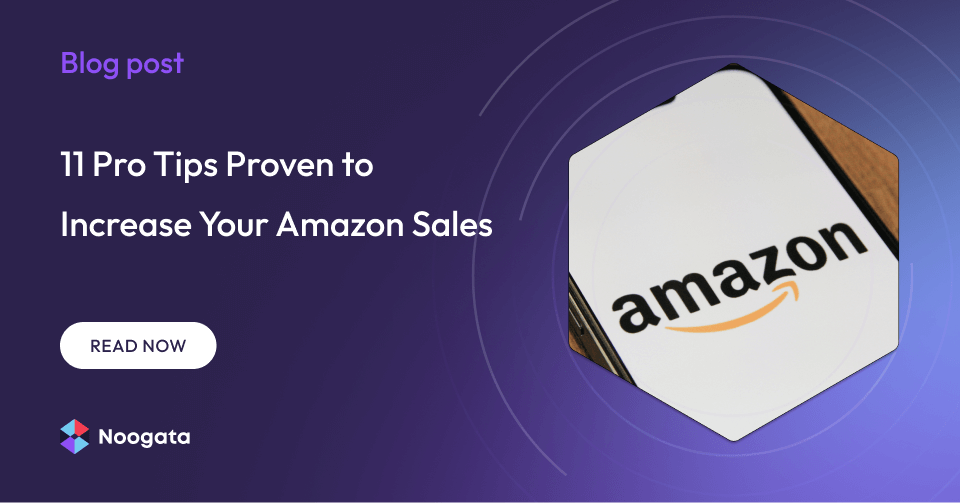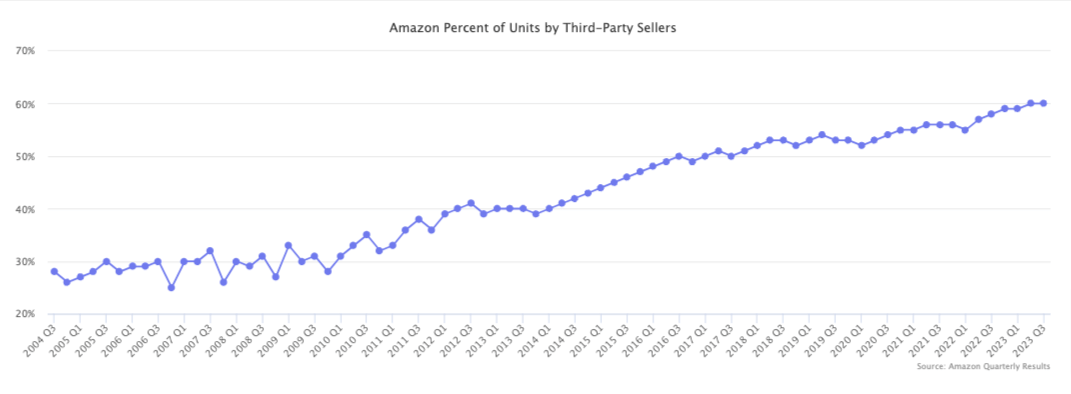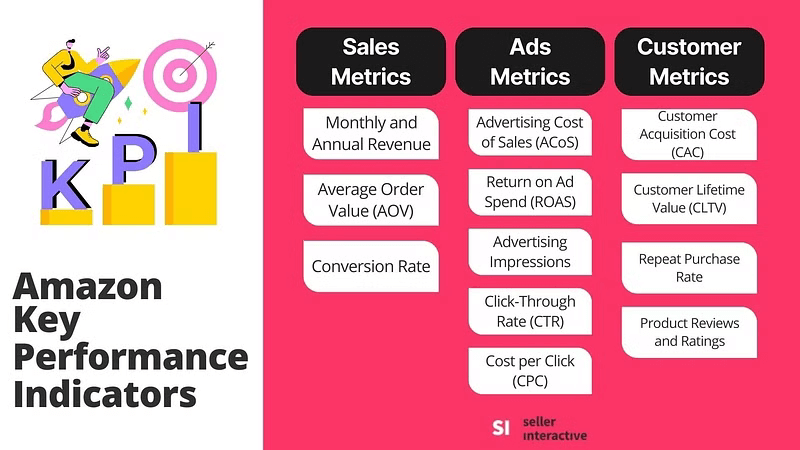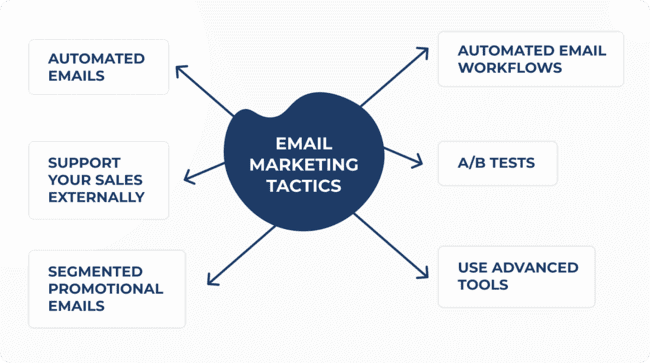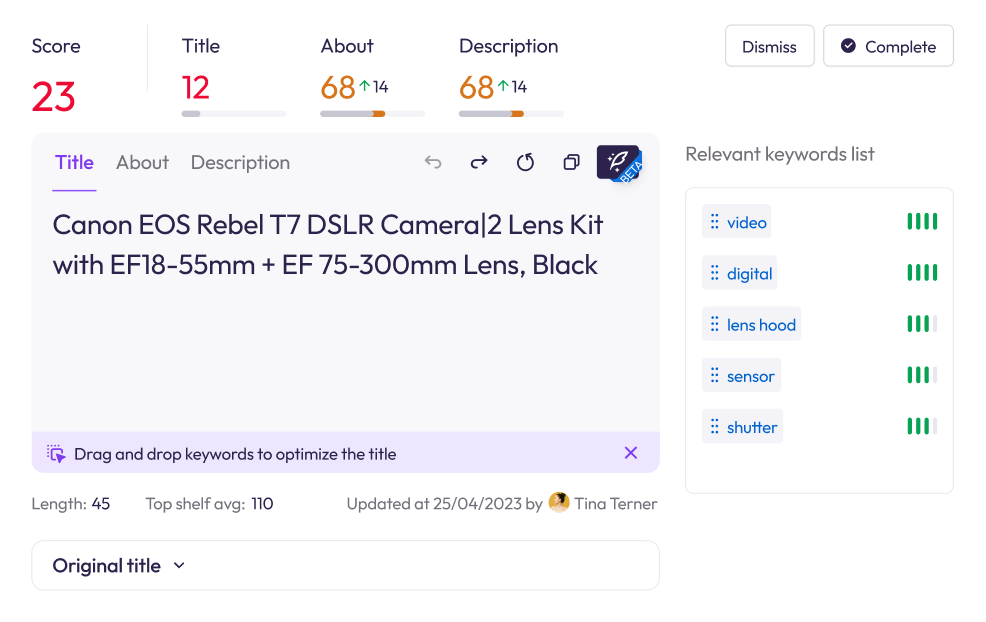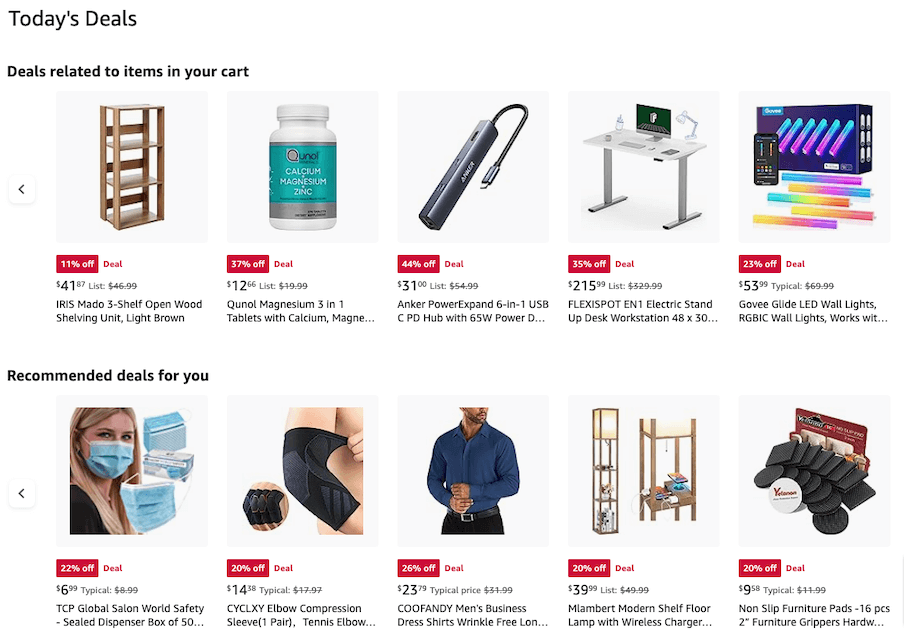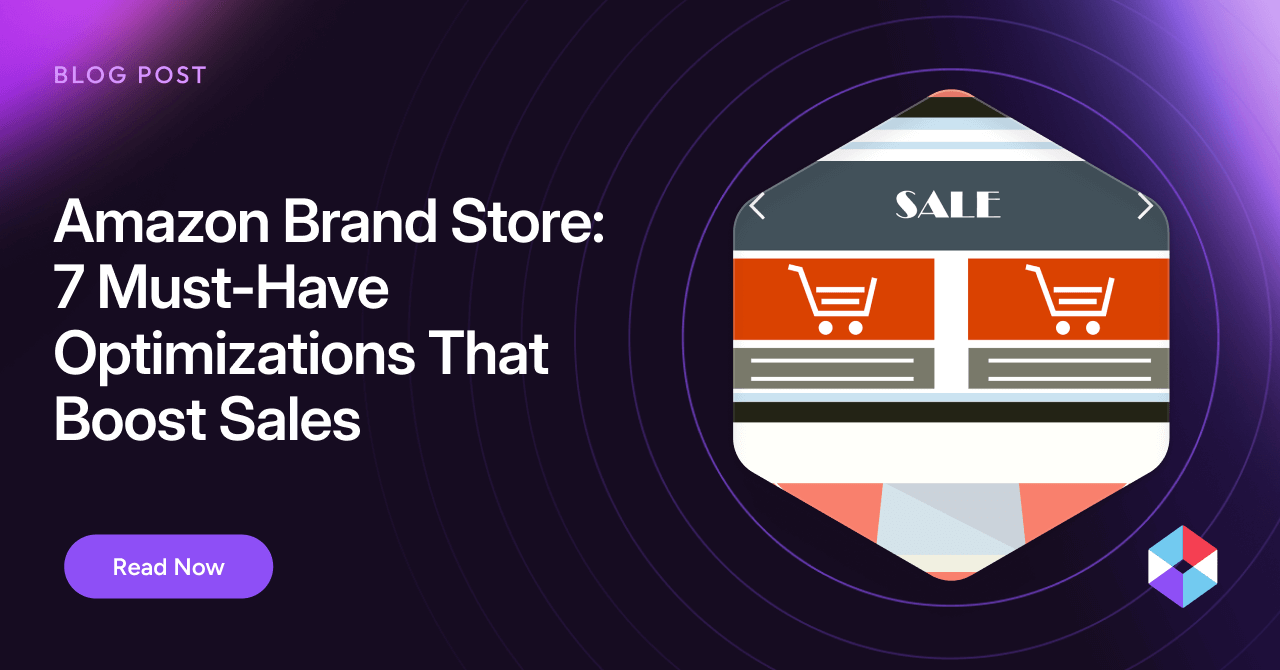Let’s face it: if you’re an active Amazon seller in today’s marketplace, you’re more than aware of the intense competition. With approximately two million sellers fighting to get a share of the over $500 billion in sales revenue generated in the marketplace, it seems intimidating, and the content you read makes it seem like a fistfight to the death. But here’s the thing—it’s not.
A recent study showed that 89% of sellers on Amazon are making a profit. Despite escalating expenses posing fresh difficulties, 37% reported that their profits grew over 2022. In fact, the growth of eCommerce over the past few years and the introduction of new AI technologies have led to more opportunities for merchants to increase their sales.
The only catch is this: to be successful, you need to know how to do it like the pros do. With the right tips, you can be one of the many third-party sellers riding a steady sales growth curve.
How to Measure Amazon Sales Success
Any discussion of how to increase Amazon sales first raises a pertinent question: how do you measure success? Tracking your revenues is an obvious choice, but the rest of the answer is mnoogateasuring the right metrics. Here are ten KPIs to keep a close eye on:
- Amazon Click-Through Rate (CTR) – This measures the effectiveness of your product listings and ads in generating clicks. High CTR suggests that your listings align well with customer searches, which is crucial for driving traffic and increasing sales opportunities.
- Buy Box Percentage – Indicates the frequency your product appears in Amazon’s Buy Box. A high Buy Box percentage is vital for boosting visitor traffic and sales, necessitating optimized strategies in pricing, inventory management, and customer service.
- Conversion Rate – Assesses the percentage of visitors to your Amazon product page who make a purchase. High conversion rates suggest effective product pages, influenced by factors such as pricing, descriptions, and reviews.
- Cost Per Acquisition (CPA) – Calculates the average cost to acquire a paying customer on Amazon. Monitoring CPA helps understand the efficiency of marketing efforts, ensuring the cost to acquire a customer doesn’t exceed the profit they bring.
- Digital Shelf Analytics – Provides insights into product performance, including search rankings, customer reviews, and pricing. Using Noogata’s AI-driven Digital Shelf analytics tool can optimize your online presence and improve product visibility.
- Keyword Ranking – Tracks product placement in Amazon search results for specific keywords. High keyword rankings are essential for visibility, driving organic traffic, and increasing sales.
- Page Views – Reflects the number of views your Amazon product pages receive, indicating the effectiveness of marketing strategies in attracting potential customers. High page views signal customer interest, while similar page views and session counts might suggest issues in engagement.
- Percent of Sales from New to Brand – Shows the proportion of sales from first-time customers of your brand on Amazon. It’s crucial for gauging the success of marketing strategies in attracting new customers.
- Product Ranking – Measures visibility in Amazon’s search results. High rankings are crucial for product discovery and purchase, especially since customers often only explore the first page of search results.
- Return On Ad Spend (ROAS), Total Advertising Cost of Sales (TACOS), and Advertising Cost of Sales (ACOS) – These metrics evaluate the effectiveness of Amazon advertising campaigns. ROAS assesses overall ad efficiency, TACOS examines the impact of advertising costs on total sales, and ACOS is the ratio between ad spend and ad-driven sales. Tracking these metrics is essential for optimizing your advertising budget and strategy to drive sales growth.
11 Pro Tips to Increase Your Amazon Sale
Now that we know what metrics to follow, let’s dive into eleven essential tips vetted by the pros that will show you how to increase Amazon sales.
1. Amplify Sales through Influencer Marketing
Partner with Amazon influencers to reach their followers, boosting sales. Identify relevant influencers, engage them for product promotion, and negotiate terms. This tactic connects your products to a ready-to-buy audience and enhances conversion rates.
2. Build an Email List
Building an email list can yield significant ROI, as it’s one of the most effective online marketing channels. For Amazon sellers, this involves directing external traffic to a landing page that precedes the Amazon listing and encouraging email opt-ins in exchange for incentives like discount codes. Your email list can be used for up-sells, cross-sells, and seasonal promotions—just be sure that your emails and offers comply with Amazon’s regulations.
3. Develop a Comprehensive Review Strategy
Amplifying product reviews on Amazon is paramount for fostering trust and driving sales. Reviews provide critical social proof, influencing buyers’ decisions and attracting clicks to your listings. Implementing strategies such as utilizing the “Request a Review” button and including product inserts that encourage reviews are effective in accumulating genuine feedback.
Automating review requests can ensure a steady influx of customer feedback, which is essential for boosting product rankings and gaining insights for product enhancement. Additionally, leveraging your email lists to solicit reviews can be fruitful.
4. Diversify into New Amazon Marketplaces
Expand your business into global Amazon marketplaces such as Canada, Mexico, and Japan. Conduct thorough market research to understand local preferences and adapt your product offerings accordingly. It’s also crucial to localize your listings, including language and SEO optimization for each marketplace. Providing multilingual customer service is imperative for effective communication with diverse customer groups.
5. Get Niche with Off-Amazon Content Creation
Creating niche-specific content on a separate website can significantly drive traffic to your Amazon listings. This strategy involves developing a content-rich site focusing on topics related to your niche, with comprehensive articles ranging from 2,000 to 4,000 words. This not only educates potential customers about the niche but also introduces them to your products.
A well-maintained niche website can attract substantial organic traffic, offering two primary benefits. First, as an Amazon affiliate, linking your site to your listings can earn you a commission of 5-15% on purchases made through these links. Second, it serves as an external traffic source, funneling new customers to your Amazon listings and potentially boosting sales.
6. Optimize Your Listing for Sales
Create compelling, error-free listings that are easily scannable and focus on product benefits. While keywords are important for SEO, the primary focus should be on persuasive copywriting that drives sales. Utilize AI tools like Noogata’s Perfect Content for listing optimization at scale, improving conversion rates and customer appeal. Remember to optimize for mobile by emphasizing high-quality images and an SEO-optimized product title.
When updating your listing, be sure to split test (A/B testing) it by altering one element at a time and measuring performance. This ongoing optimization improves impressions, click-through rates, and conversions while incrementally boosting sales.
7. Level Up Your Keyword Research
Improve your listing visibility with broad, long-tail keywords, crucial for targeting specific customer intents. Utilizing competitive intelligence tools like Noogata can help you uncover hidden keyword gems by identifying search trends, discovering meaningful keywords, and monitoring your competitors’ listings. This approach not only broadens your reach but significantly enhances the likelihood of conversion by leveraging Amazon’s SEO to boost organic traffic and sales.
8. Retargeting Campaigns
Retargeting campaigns focused on individuals who have shown interest in your product, whether through ad clicks or social media interaction, tend to have a higher ROI and conversion rate. By directing these potential customers to a landing page or using a shortened URL with an embedded tracking pixel, you can specifically target individuals who have already interacted with your brand.
9. Run & Optimize PPC Campaigns
Elevate your products’ visibility with optimized Amazon PPC campaigns. Continuously adjust your campaigns for efficiency and budget allocation, and follow our smart steps for PPC optimization to increase clicks and sales, which is crucial in Amazon’s increasingly “pay to play” landscape.
10. Maximize On- and Off-Amazon Promotions
Drive external traffic to your listings using platforms like Facebook, Instagram, Google, and TikTok. Offering exclusive, single-use promo codes through these channels can incentivize purchases, leading to a sales surge often perpetuating into organic, full-priced purchases.
Amazon offers various on-platform promotions, such as Lightning Deals, 7-Day Deals, and Coupons, which enhance product visibility both on listings and search results, as well as on Amazon’s showcase pages. While competitive and sometimes costly, these promotions can significantly accelerate sales velocity and result in a beneficial cycle of increased sales, leading to improved organic rankings and sustained sales growth post-promotion.
11. Get Your Pricing Right
Optimal pricing is a delicate balance crucial for Amazon success. Competitive pricing influences buyer decisions, especially when similar products are available. Sellers should avoid pricing too high, which could deter customers, or too low, which may reduce perceived value and revenue. Regular monitoring and adjusting of prices, in line with market trends and competition, can enhance sales potential without compromising profit margins.
If you’re a CPG brand, consider using the PPA (Price Pack Architecture) framework to structure and optimize your offerings based on pricing, packaging, and volume. Implementing tools like automated repricing can help maintain a competitive edge without constant manual adjustments.
Pro Tip: Increase Amazon Sales with Noogata
These advanced strategies provide a roadmap for sellers who want to know how to increase Amazon sales. Each of these pro tips is essential to elevate your performance and sales on the platform. By focusing on these key areas and continuously optimizing your approach, you can significantly enhance your products’ Amazon presence and profitability.
One tip that makes a significant difference is using Noogata’s advanced, AI-powered competitive intelligence eCommerce platform and AI Amazon Growth Assistant. It provides your C-suite and eCommerce team with access to deep analytics and actionable insights that will help you outperform the competition.
Try Noogata’s free demo to see how it helps increase your Amazon sales like the pros.
